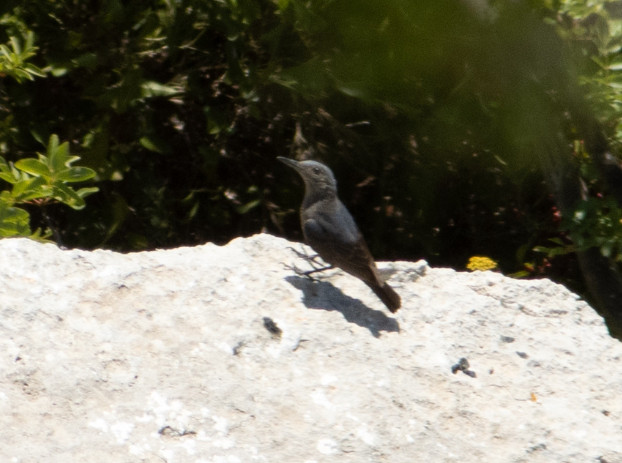Beschreibung
Les Baux-de-Provence (commonly called Les Baux) is located in the Alpilles mountains, atop a rocky outcrop that is crowned with a ruined castle overlooking the plains to the south. Around the old Castle built into the rocks lots of Alpensegler, Mauersegler and Felsenschwalbe are flying around. Felsenschwalbe is breeding in the rocks. Also a good chance on Blaumerle and Hausrotschwanz. Sometimes also Blauracke can be seen. Around the castle are lots of olive groves. There you can spot Heidelerche, Zaunammer, Berglaubsänger, Rothuhn and a lot more. In winter on the rocks around the village Mauerläufer and Alpenbraunelle are spotted regularly..
Details
Zugang
Les Baux is located 15 km northeast of Arles. You can go there by car and park at the parking spots. Click on a P in the map for directions. Going there by bike is possible (also parking spots available). The road up is rather steep, above avarage, fitness is required. It is very hot during the summer, bring enough water to drink. Entry to the village is free. Entrance to the castle costs € 8.
Terrain und Habitat
Wald , Berg , Vereinzelte Bäume und BüscheBedingungen
Hügelig , Felsig , Gebirgig , TrockenRundweg
NeinIst ein Spektiv nützlich?
Möglicherweise hilfreichGute Beobachtungszeit
Frühjahr , Sommer , HerbstBeste Beobachtungszeit
Frühjahr , SommerRoute
Normaler WegSchwierigkeitsgrad der Tour
EinfachErreichbarkeit
zu Fuß , Fahrrad , AutoBeobachtungshütten oder -türme
NeinZusätzliche Informationen
Photo Les Baux by Clément Bardot, CC BY-SA 4.0, https://creativecommons.org/licenses/by-sa/4.0, via Wikimedia Commons





